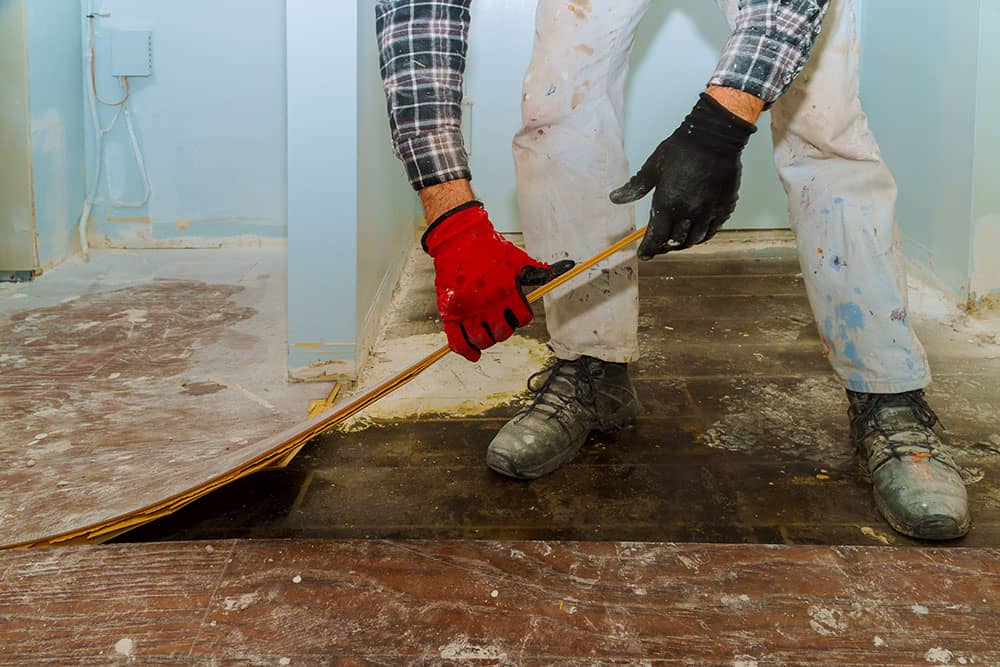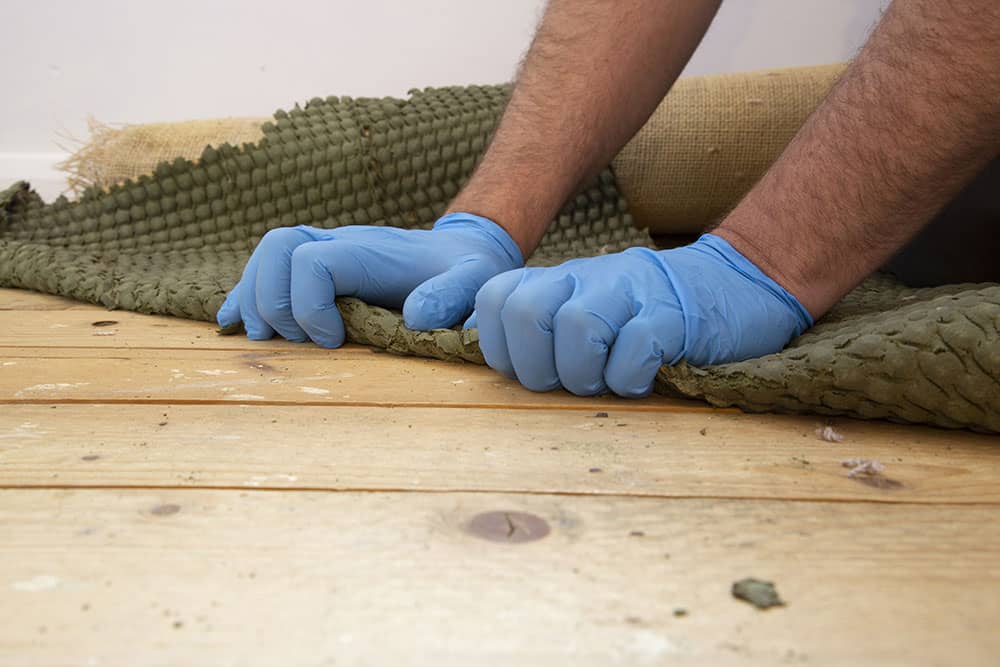
Installing new flooring is often a significant upgrade for most homes. It’s often costly and takes time, so it’s only right that it is done right from start to finish. When successful, the new flooring can become a significant upgrade that improves a home’s appearance, function, and value. An essential part of the process is flooring removal. How do you remove your old flooring? Most importantly, how do you dispose of it?
The steps in removing and disposing of flooring will depend on the material. As a guide to the process, we have outlined the most common types of flooring and how to remove them below:
- Carpet: Removing a carpeted floor starts with getting rid of obstacles, such as baseboards. Then you need to cut the carpeting into more manageable strips, usually around 0.60 to 0.90 metres. From here, you can pull up the carpeting, starting at one end and rolling it up as you go. You will encounter tack strips, which you can easily remove using a pry bar. Be careful when getting rid of them, especially if you have a concrete subfloor. If so, you may require more strength when hammering the pry bar. Wear safety glasses for protection.That’s it. Once you have removed all the carpeting, you may want to make sure the surface is clean before installing new flooring.
Your job is not done yet. You have to dispose of the old carpet. It is unlawful to simply place your construction debris in the kerbside bins. Make sure that you have a carpet disposal plan since you cannot put the flooring material with your regular waste.
- Laminate & Vinyl: You may want to start the process by removing baseboards and doors that may be in the way. Begin the removal task at a corner or edge, lifting a plank using a hammer and pry bar. Remember that you can reuse the planks, so you may want to be careful when lifting and removing them.An alternative is to use a circular saw to cut the boards. Choose the appropriate blade depth, which depends on how thick the planks are. Roll up the underlayment, which you can either reuse or dispose of if it’s no longer in good condition. You will need to finish the job by removing the remaining adhesive. Check the instructions provided by the manufacturer and ensure that you follow the steps given. Take the necessary precautions, so you do not damage the subfloor.
Once again, you should clean the floor thoroughly before moving on to the next step, which is to install your new flooring.
- Linoleum: Before you proceed, you should test for asbestos first, especially if the property or the flooring itself has been around since the 1970s or even the 1980s. If it is the case, you may want to leave the job to professionals instead. But if your flooring is fairly new, you don’t need to worry about asbestos.Start the process by peeling off the linoleum from the subfloor, beginning the process on a single corner and work towards the other side. You can use a floor scraper for easier removal. You will also need a strong adhesive removal to get rid of the adhesive on the subfloor.
- Tile: For this flooring material, you should first prepare the site by ensuring there are no blockages on the way, such as fixtures like toilets or sinks. You may need to use a hammer and pry bar or chisel, which will help speed up the removal of each tile. If applicable, the next step involves the removal of underlayment. Some tiles may be in good condition, so you may want to set them aside to salvage them for reuse. Finally, you can remove stray nails or staples if there are any. Clean the area and dispose of the tiles properly.
Flooring Disposal Tips
No matter what flooring material you have, you will need to think about the disposal process. You will be generating lots of debris, so consider this fact before you proceed. It’s important that you have a plan for disposing of the old floors. Alternatively, you can repurpose old flooring.
Remember that you cannot donate old flooring materials, including carpets. Charities don’t usually accept old or used carpets to avoid health concerns. Nevertheless, here are some options:
- Retailers may be willing to dispose of the material, especially carpets, for you.
- Fitters may offer to dispose of the old flooring, but you usually have to hire them for removal. Some, however, will do it for a fee.
- You can reuse your old flooring, depending on its condition.
The easiest way to dispose of unwanted carpet, tile, laminate, and other types of flooring material is to hire a skip bin. The size of the skip bin to hire is crucial since it should be enough for the waste you will generate from the project. Here are ways to know the suitable skip bin size for your flooring disposal:
- Calculate the volume and size of the flooring material. For instance, your carpet is 10mm thick.
- Measure the rooms in the house where you will remove the flooring. For example, you have three bedrooms with 3m x 3m dimensions, giving you a total of 27 square metres. Consider other rooms, as well, such as your dining room and lounge, where the old flooring material will be removed.
- Let’s say that the total measurement is 97 square metres.
- To get the figure in cubic metres, take the thickness of the carpet (10mm) and the total size of the area (97 square metres).
- The solid volume is 0.97 cubic metres.
The size you save and use will depend on how you dispose of the carpet (or any flooring material). Try your best to fit the material into the bin using as little space as possible. Typically, a 0,97 cubic metre solid volume can be easily fit in a 3 cubic metre bin. If you have other materials that should be disposed of, choose a 4 cubic metre skip bin to be on the safe side
If you need more help with your renovation or flooring removal, let our team know, we can offer advice on the best size skip bin to use.
Backyard Bins Team
“ [rcblock id="2165"]”
